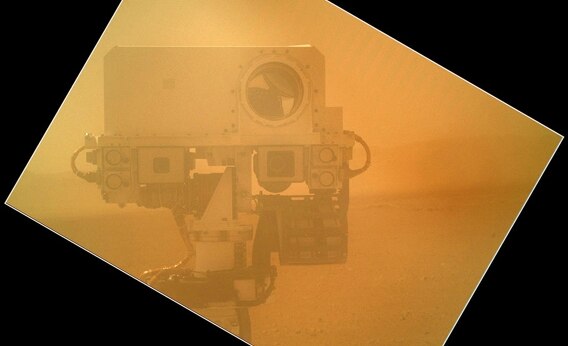Create a free profile to get unlimited access to exclusive videos, sweepstakes, and more!
Two Asteroids Seen … From Mars!

Well, this is pretty nifty: For the first time, asteroids have been seen from the surface of Mars. Not only that, but we get two for the price of one!
The Curiosity rover normally takes lots of pictures of the surface of the Red Planet, but sometimes the cameras are pointed heavenward to capture images of the sky (it once took a picture of the Earth and Moon together). In this case, it was aimed at the tiny Martian moon Deimos. We know how bright Deimos should look from the surface, and how bright it actually appears to the rover gives an indication of how transparent the sky is. Sometimes ice and haze form in the thin air on Mars, and this is a good way to measure it.
However, a cosmic coincidence adds some spice to the picture. The asteroids Ceres and Vesta are both on the same side of the Sun right now, and very near each other in the sky as seen from Mars (and on Earth, too). The folks planning the Curiosity observations could’ve taken the pictures any time, but on April 20, 2014 they waited until Deimos moved near the two asteroids. In that way, they made a solar system first.
Vesta is almost visible to the naked eye from Earth, and Ceres a bit fainter. But Mars is 100 million kilometers (60 million miles) closer to the pair, making them brighter, and easily visible to Curiosity’s camera. What’s funny is that right now, Mars is almost directly between us and the two asteroids—all three are in the constellation of Virgo. Mars is about 15° from Ceres, and 12° from Vesta. Most binoculars have a smaller field of view than that, but with a good sky chart you can spot all three in a matter of seconds.
And when you peer in that direction, think on this: The Dawn spacecraft spent over a year at Vesta, taking incredible observations of the asteroid. It left there in September 2012 headed outward … to Ceres! It’ll arrive at the solar system’s largest asteroid in February 2015. It’s far too faint to see with even a big telescope, so you’ll never see it yourself with binoculars, but it’s there.
When you look at that part of the sky you’re seeing roughly the same thing Curiosity did, but you also see Mars with Curiosity on it. And in that same region of the sky is another spacecraft, another proxy of humanity, on its way to explore yet another world.
I get chills thinking about that sometimes. We see amazing things from our home planet, but what we can’t see well we send our robots to explore, leap frogging their way across the solar system. We achieve great things, we humans, when we want them badly enough.


























